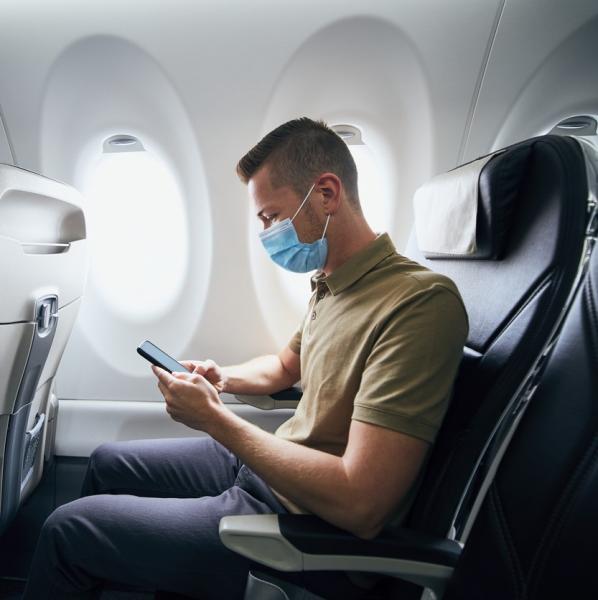The COVID-19 pandemic has created an impact on airline travel. After the virus spread in 2020, the number of global passengers fell from about 4.5 billion to around 1.76 billion, according to market and consumer data company Statista. As more people return to flying for the holidays, they may have a number of questions about how to do so safely, including whether face masks are safest to use on a plane? Here, are some things to think about, according to medical and travel professionals, to ensure that the mask you wear on your next flight provides the greatest protection.
There are essentially two types of masks available to the average consumer, according to Firas Zabaneh, MT (ASCP), CIC, CIE, director of system infection prevention and control for Houston Methodist Hospital in Houston, Texas. “Since the beginning of the epidemic, the quality of reusable fabric masks has dramatically increased,” stated Zabaneh. “Some cotton masks can guard against COVID-19 transmission just as well as high-quality disposable masks.” While some have questioned the usefulness of cloth masks, Zabaneh claims that many manufacturers are now conducting tests to confirm their effectiveness at filtering out particles. He recommended that they use a certified independent lab with a strong reputation for their tests.
For the general population, he described cloth masks as a “wonderful alternative” to disposable masks. According to Zabaneh, disposable masks are available in many different styles in addition to fabric masks. The best types, are medical-grade, ASTM-certified, and FDA-approved (FDA). The American Society for Testing and Materials (ASTM) divides medical masks into three categories: 1, 2, and 3. The better the protection provided by a higher grade level. According to him, some medical-grade masks are sold to the general public “Three or four layers of material make the best masks,” he noted. Masks, such as the KN95 masks or N95 respirators, are also available. “Most public settings do not require these masks,”. They’re made to filter out 95% of particles and are typically utilised by healthcare workers in high-risk situations.


